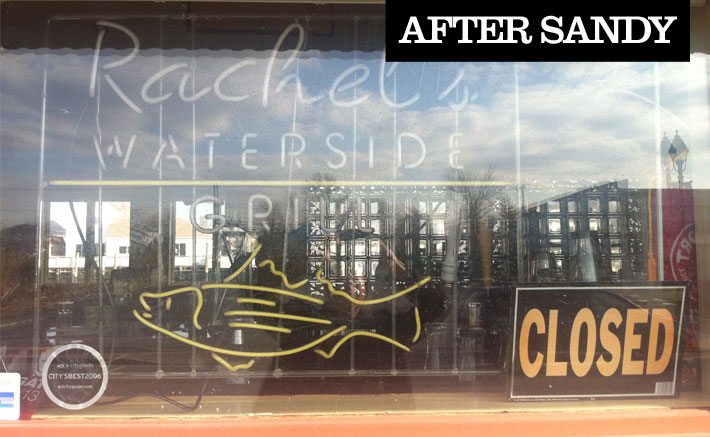
Taking Small Steps
A recent Marist College poll reports that 36 percent of New Yorkers under the age of 30 plan to leave the Empire State within the next five years—while more than a quarter of all adults say they want to split, too. They cite the usual suspects: high property taxes, expensive housing and the poor economy. Meanwhile, according to 2010 Census Bureau figures, the Island’s 65-and-older demographic group increased by more than 10 percent since 2000, while the number of adults between the ages of 25 and 44 dropped almost 6 percentage points. The growing urge for going forces those in power to do something sooner rather than later.
As one of the LI 2035’s “sustainable strategies,” legislation was recently passed in Nassau and Suffolk to create “Long Island First,” a cooperative effort representing a broad range of industries to encourage residents and businesses to buy Long Island products, goods and services. The new measure, which commits each county to cough up $5,000 in seed money, was sponsored in Suffolk by Legis. Wayne R. Horsley (D-Babylon) and in Nassau by Legis. Denise Ford (R- Long Beach). Unemployment in the building trades on Long Island is currently “more than 30 percent,” says Pete Zarcone, of the General Building Laborers Local 66, and he believes this initiative could help. “I’m surprised that it hasn’t been tried before,” he says.
Months ago the LIRPC touted the creation of its Education Working Group, another one of its sustainable strategies, which brought together the heavy hitters in Long Island’s education establishment, from teachers to superintendents to elected officials and business people.
Its agenda includes addressing inequities in educational opportunities, ending unfunded mandates, using technology to more effectively deliver teaching services, providing incentives for consolidating school districts, reducing the costs of the public retirement system, pursuing alternatives to the state health insurance program, reforming the state’s education funding formula (which hasn’t taken into account LI’s higher cost of living compared to upstate districts), assessing regionalized collective bargaining for school employees, supporting the creation of workforce housing (which has tax benefits to the districts that are more favorable than single-family homes), and monitoring the plan’s recommendations, as the council says, “to achieve the desired results.”
“I met for four months with people from the education establishment who I thought would never talk to each other: the unions, the school boards and the parents’ groups,” says Levy. “It’s easy to be a naysayer. It’s a lot harder to get out of your little spheres of interest and work with people you don’t entirely agree with to make things happen.”

A map from the LI 2035 report, top, depicts the impact of a rise in the sound due to global warming. Above, a chart shows the rising effect of Long Island’s property taxes.
A participant in the process, who asked to be anonymous given his policy-making position in Long Island government circles, was critical. “I think John Cameron is heroic, but I don’t think the sustainability study is very good,” the source says. “It’s not very bold or ambitious. I think it’s just another report to be put on a shelf and never to be looked at again. One mistake was to put elected officials on the council. Elected officials don’t ever want to take risks unless they have to. So in putting this report together it automatically gets watered down.”
The well-connected Long Islander took particular issue with how the LI 2035’s Education Working Group has handled the school spending issue. “It’s not enough to get them into the same room,” he says. “As a result you’ve got a report recommending—I’m exaggerating but only slightly—‘let’s be more efficient buying pencils.’ Well, that’s ridiculous. If they got their pencils for free, it wouldn’t do anything. It’s all about teacher salaries, teacher benefits and personnel costs. That’s driving the cost of every school district on Long Island, more or less, and school spending is a very large percentage of Long Islanders’ tax bills. Not to take that on, especially at a time when [Gov. Andrew] Cuomo and the two county executives are railing on it, seems to me a missed opportunity.”
Having elected officials from both parties as well as business leaders and community advocates serve on the council could explain why the LI 2035 report is rather reticent on the property tax cap issue. The cap is clearly a hot button topic on Long Island, with state Senate Majority Leader Dean Skelos (R-Rockville Centre) approving Cuomo’s plan to cap hikes at 2 percent or the inflation rate, whichever is lower, unless 60 percent of the local residents vote to override it. But the education establishment—and the Democratic majority in the state Assembly—oppose the idea, and so it remains stalled in Albany.
White observed that the school districts with the least wealth have persistently low achievement scores.
“Tax caps would accentuate those problems,” White says. “There’s no doubt about it.” But the LIRPC’s solution so far is “tying together groups related in education.”
By 2035 a projected 54 percent of the population here will be “non-white,” so the report calls for promoting “a more equitable, fair and balanced quality of life for all Long Islanders.” With that goal in mind, the LIRPC recently was awarded a grant under the federal Department of Housing and Urban Development to develop a “Fair Share Housing Plan,” which would create mixed-income housing at transit-supported locations on the Island.
Having that grant money for future projects (no dollar figure has been released as yet) is definitely welcome, but it’s not clear if the LIRPC will even be around to administer it.






